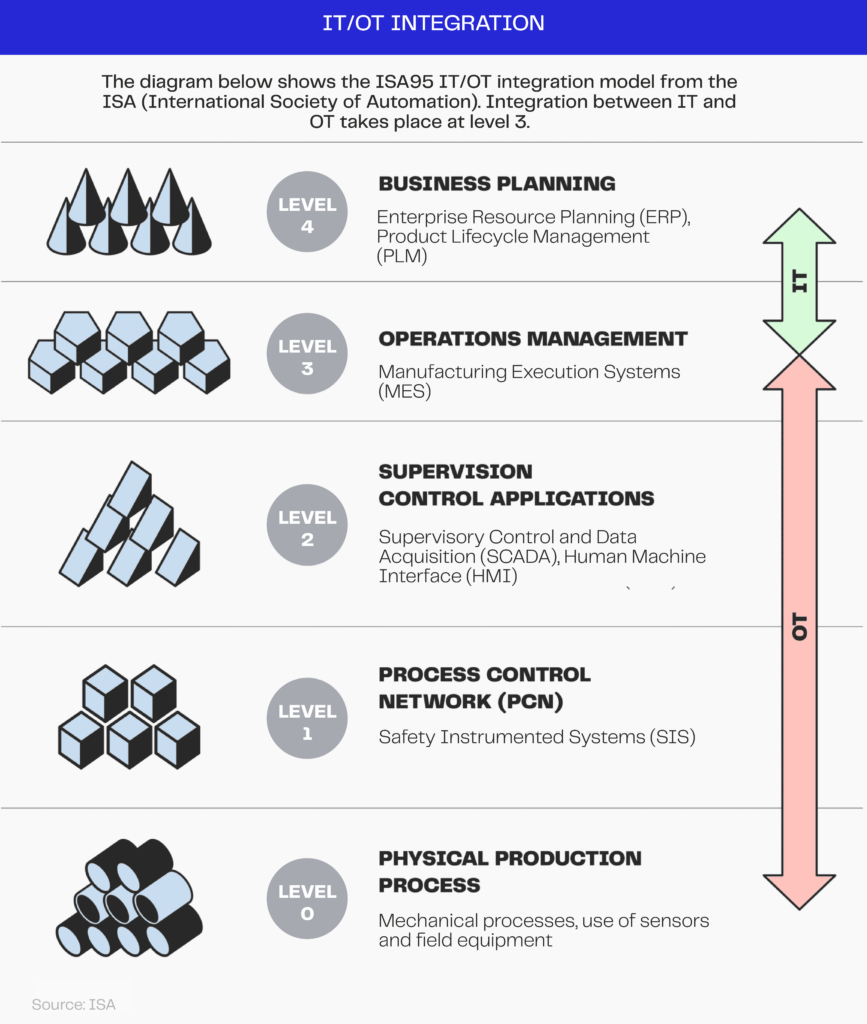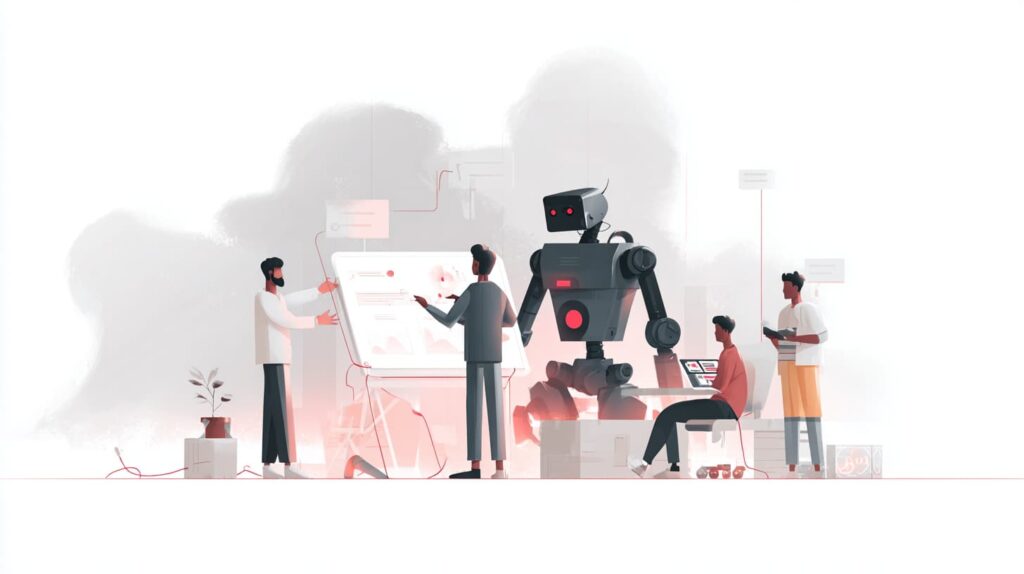By EloInsights, in collaboration with Thiago Leite
This second (and final) introductory article on Industry 4.0 delves into the challenges of digital transformation within the industrial sector.
Granularity of machinery data and vertical integration of systems are points that organizations need to work on.
Staff upskilling, increasing analytical ability and incorporating digital competences are also challenges.
In the first article of this introductory series on Industry 4.0 in the context of the Brazilian market, we highlight some of the fundamental concepts of this new way of looking at industry challenges; an approach that is based on integrating different enabling technologies with typical operational challenges to generate positive impacts on the business.
Among these technologies there are artificial intelligence, advanced analytics, internet of things and robotization. We have talked about how these enabling competences need to be used as lenses, which will allow each organization to find ways of delivering impact within their specific circumstances.
In this second article, we will address challenges that are characteristic of digital transformation in industry:
- The need to integrate systems at various levels of organizations, from physical production processes to business planning;
- Training and a change in the profile of the type of work carried out, with the urgent need to integrate greater analytical capacity.
The integration of IT and OT in industry
“An important difference in the digital transformation of industry is that we work with more granular information, which needs to be constantly monitored”, explains Thiago Leite, senior manager at EloGroup.
“We have moved away from pure IT (Information Technology), at level 4 – Business Planning, security, servers and workstations, emails, databases and applications – and we are going to AT (Automation Technology) and OT (Operational Technology) dimensions, at lower levels”.
He is referring to the ISA95 model from the International Society of Automation, which proposes a way of organizing these several types of systems into five levels:
In physical production, that involves mechanical processes and field equipment, the information produced is granular and often unstructured, which makes processing it a more complex challenge.
Managing the maintenance of machinery in an industrial plant, for example, depends on information such as temperature and vibration levels in the operation of the equipment. In this scenario, process optimization and efficiency gains depend on using this data and integrating it with other systems.
Although other sectors of the economy also deal with this problem of data granularity, in industry it is critical to guarantee the operational safety of factories, the stability of the production process and the protection of the environment. This is a key point because the lack of data monitoring at the required granularity can result in accidents or even environmental disasters.
An example of the specificities of using data in industry: in order to consolidate the so-called “overall equipment efficiency” (OEE), an indicator of how close to its maximum production potential a piece of equipment is working, it is necessary to cross-reference data from different sources and processes in order to understand whether the analyzed piece of equipment is unavailable because of a defect in itself or in another piece of equipment, whether production performance is compatible and whether the quality of the product at the end is within specifications.
Traditionally, due to the lack of available and integrated granular data, the calculation is done manually. To speed up and make these operations more precise, the application of automation and artificial intelligence is a possibility.
In this vertical view, the digital transformation of the industry must gradually penetrate the distinct levels, from the most basic in the regulatory sphere, traditional automation, such as alarm management and industrial networks, to the most complex, involving advanced models for optimizing production planning, the operational configuration of plants, advanced process control and asset health management.
“Replacing manual labor with the automatic measurement of these indicators and the integration of systems enables more autonomous decision-making on the shop floor”, says Leite. These changes do not just have an impact on the requirements of the machinery, but also require people to adapt culturally and technically.
Training and building foundations in Industry 4.0
The growing need for knowledge about innovative technologies at all levels of the organization naturally has an impact on the urgency of investing in digital intelligence.
One of the challenges in industry is to ensure that employees have access to data that will enable less subjective decision-making, within a culture orientated towards experimentation.
In many cases, however, industrial plants still lack the technological maturity to generate greater synergy between the management and production areas. It is essential to invest in the foundations, organizational and technical elements that will enable the use of more advanced technologies on a permanent basis, and not just on a one-off basis. This means building infrastructure, standardizing processes and acculturating people.
In terms of practical actions, a simple example is to guarantee a connection to data networks in key areas of the industrial plant, enabling the rapid flow of information relating to operations and production, and making it possible to use it in systems that can bring the operational gains, in the form of greater agility and cost predictability.
Another example is upgrading and increasing server capacity to enable the processing of larger volumes of local data from factories and transferring it to corporate clouds, where it can be enriched with other relevant data such as industrial costs and revenues.
Other types of “foundational” investments: applying data intelligence directly to the production line, with predictive executions that will reduce losses and avoid costly maintenance; integrating systems, enabling structured and strategic access to supplier data that will enable real-time forecasts and bring greater efficiency to logistics and the production chain.
It is worth pointing out that although many industrial suppliers offer access to enabling technologies and sometimes even competence centers with direct access to factory data to bring insights to factories, the leading role in the journey and the responsibility for internalizing capabilities still is with the industries.
In this context, training the workforce must consider the impact of adopting these technologies on people. The first point is valuing and welcoming those going through this transition.
“At a more operational level, it is really urgent to train people in a way that reframes the concept of work in industry”, points out Leite. There is a growing demand for the application of knowledge related to statistics, interpreting results and numbers. Activities are losing their manual character and demand speed in reading alerts and adopting standard procedures.
Acculturation and training programmed in key areas, such as advanced analytics, must be included in the scope of organizations. It is important that this analytical capacity comes from within the industry itself, so that all sectoral knowledge can be used with a new dimension of analysis.
It is essential to gain a deep understanding of the enabling technologies and the relationship between the IT, AT and OT areas at an organizational level. From the main limitations to aspects of architecture and integration. There are two main ways to achieve this: cultivate close partners who help build these capabilities or internalize the creation of competences.
In the first case, an example of “inorganic” training would be the acquisition of a start-up that master the enabling technology in question, such as sensing, advanced analytics, among others. The incorporation of an already skilled team into the organization tends to result in faster results.
On the second path, organic training may take longer, but there are also some measures that can be applied and help bring results, such as the implementation (if the need is for advanced data analysis) of a Centre of Excellence in Analytics (CoE Analytics), whose function is to align the vision of advanced analytics with the company’s business strategy, improve capabilities in various organizational areas, increase the quality of data with standardization and application of good practices for more advanced analysis and contribute to attracting and retaining high-level technical talent.
As we have already discussed, there is no single technology or solution that can be applied universally to the different segments of the industry. Each sector has specific processes and use cases.
This is partly explained by the variation in assets: in the automotive industry, large presses and funneling robots play a significant role in production lines, while in the steel industry it is the furnace that occupies this position. In the pulp industry, it is the paper machine and the turbogenerator.
Therefore, each of these industries will have to find their own paths, within their specific realities, and deal with the different challenges that appear from this plurality of scenarios, which also include the varying stages of digital maturity of each organization, among other aspects discussed above.
But regardless of where each company finds itself in this non-linear trajectory, the fundamentals detailed so far guarantee a guide so that they can move towards appropriating enabling technologies as lenses capable of unlocking the potential of Industry 4.0 in each scenario.
THIAGO LEITE é gerente sênior da EloGroup.












